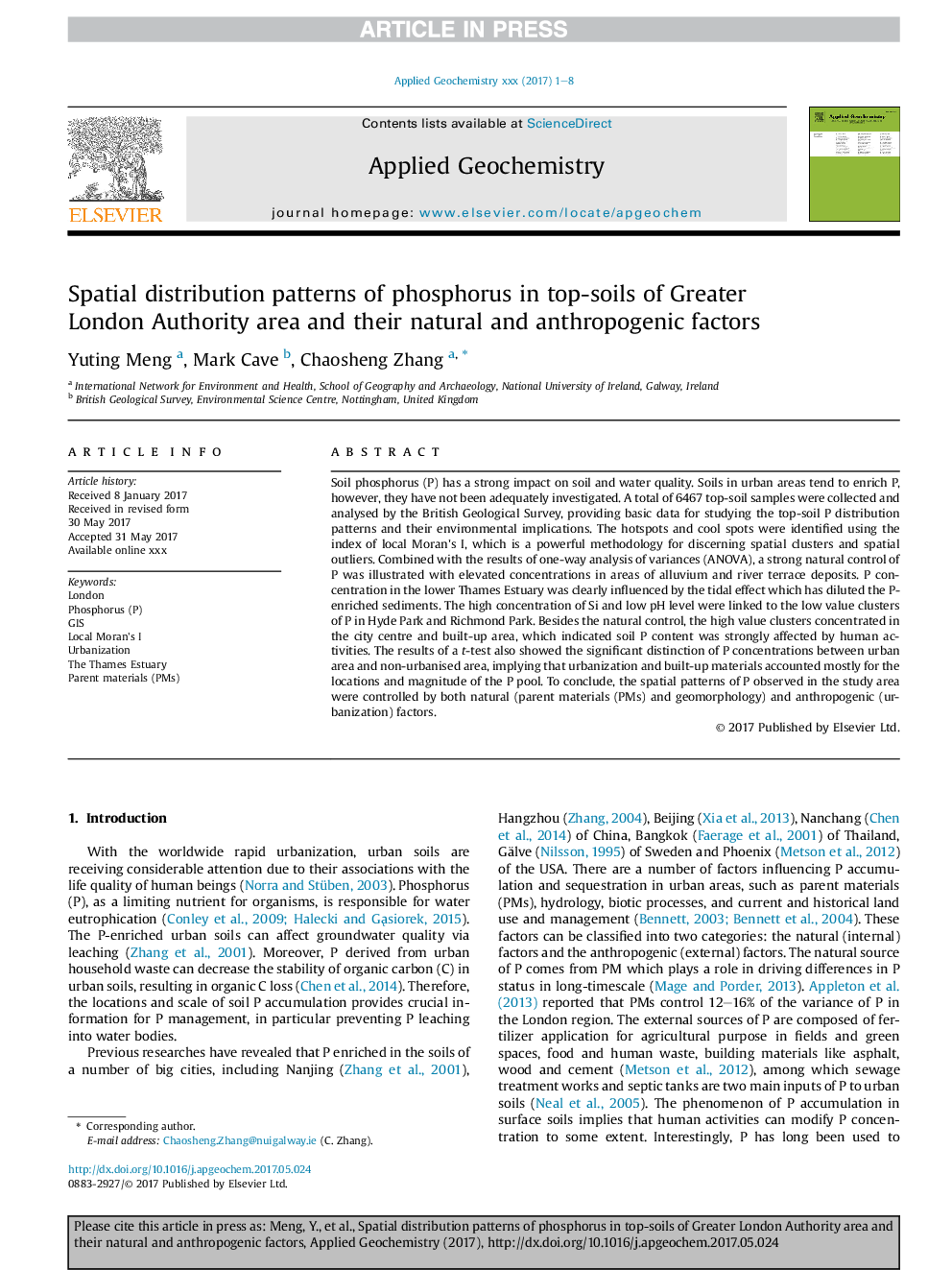| Article ID | Journal | Published Year | Pages | File Type |
|---|---|---|---|---|
| 8863227 | Applied Geochemistry | 2018 | 8 Pages |
Abstract
Soil phosphorus (P) has a strong impact on soil and water quality. Soils in urban areas tend to enrich P, however, they have not been adequately investigated. A total of 6467 top-soil samples were collected and analysed by the British Geological Survey, providing basic data for studying the top-soil P distribution patterns and their environmental implications. The hotspots and cool spots were identified using the index of local Moran's I, which is a powerful methodology for discerning spatial clusters and spatial outliers. Combined with the results of one-way analysis of variances (ANOVA), a strong natural control of P was illustrated with elevated concentrations in areas of alluvium and river terrace deposits. P concentration in the lower Thames Estuary was clearly influenced by the tidal effect which has diluted the P-enriched sediments. The high concentration of Si and low pH level were linked to the low value clusters of P in Hyde Park and Richmond Park. Besides the natural control, the high value clusters concentrated in the city centre and built-up area, which indicated soil P content was strongly affected by human activities. The results of a t-test also showed the significant distinction of P concentrations between urban area and non-urbanised area, implying that urbanization and built-up materials accounted mostly for the locations and magnitude of the P pool. To conclude, the spatial patterns of P observed in the study area were controlled by both natural (parent materials (PMs) and geomorphology) and anthropogenic (urbanization) factors.
Related Topics
Physical Sciences and Engineering
Earth and Planetary Sciences
Geochemistry and Petrology
Authors
Yuting Meng, Mark Cave, Chaosheng Zhang,
